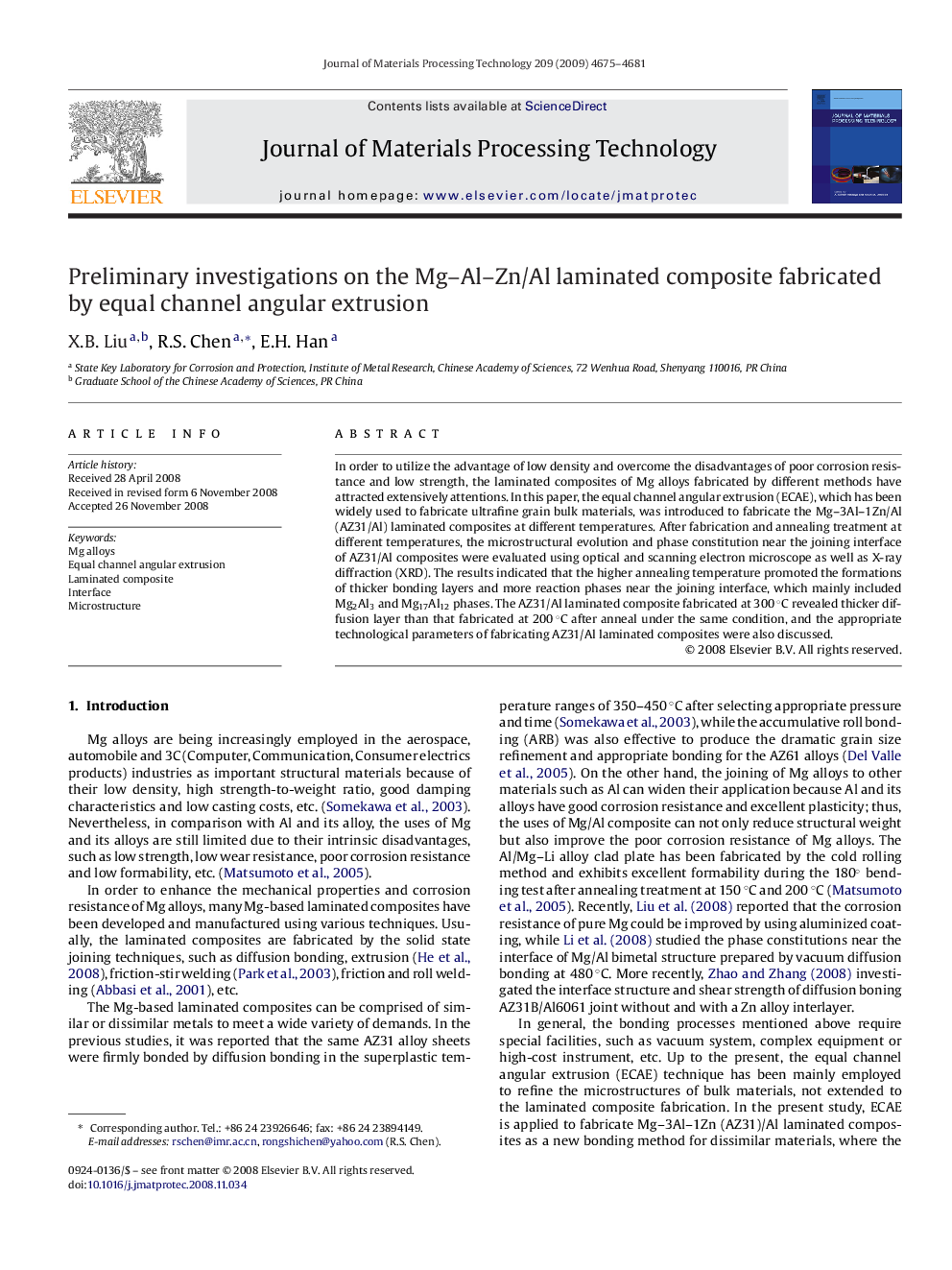| Article ID | Journal | Published Year | Pages | File Type |
|---|---|---|---|---|
| 793370 | Journal of Materials Processing Technology | 2009 | 7 Pages |
In order to utilize the advantage of low density and overcome the disadvantages of poor corrosion resistance and low strength, the laminated composites of Mg alloys fabricated by different methods have attracted extensively attentions. In this paper, the equal channel angular extrusion (ECAE), which has been widely used to fabricate ultrafine grain bulk materials, was introduced to fabricate the Mg–3Al–1Zn/Al (AZ31/Al) laminated composites at different temperatures. After fabrication and annealing treatment at different temperatures, the microstructural evolution and phase constitution near the joining interface of AZ31/Al composites were evaluated using optical and scanning electron microscope as well as X-ray diffraction (XRD). The results indicated that the higher annealing temperature promoted the formations of thicker bonding layers and more reaction phases near the joining interface, which mainly included Mg2Al3 and Mg17Al12 phases. The AZ31/Al laminated composite fabricated at 300 °C revealed thicker diffusion layer than that fabricated at 200 °C after anneal under the same condition, and the appropriate technological parameters of fabricating AZ31/Al laminated composites were also discussed.
